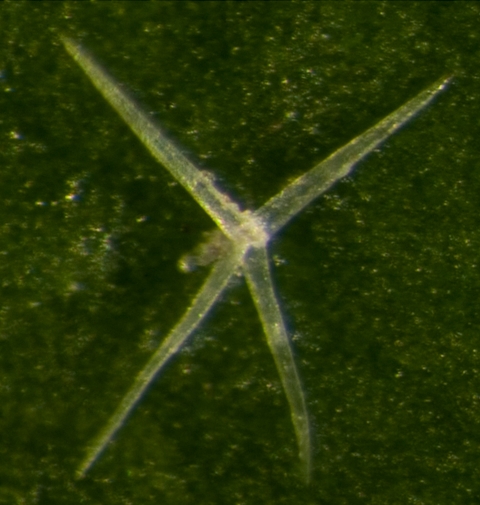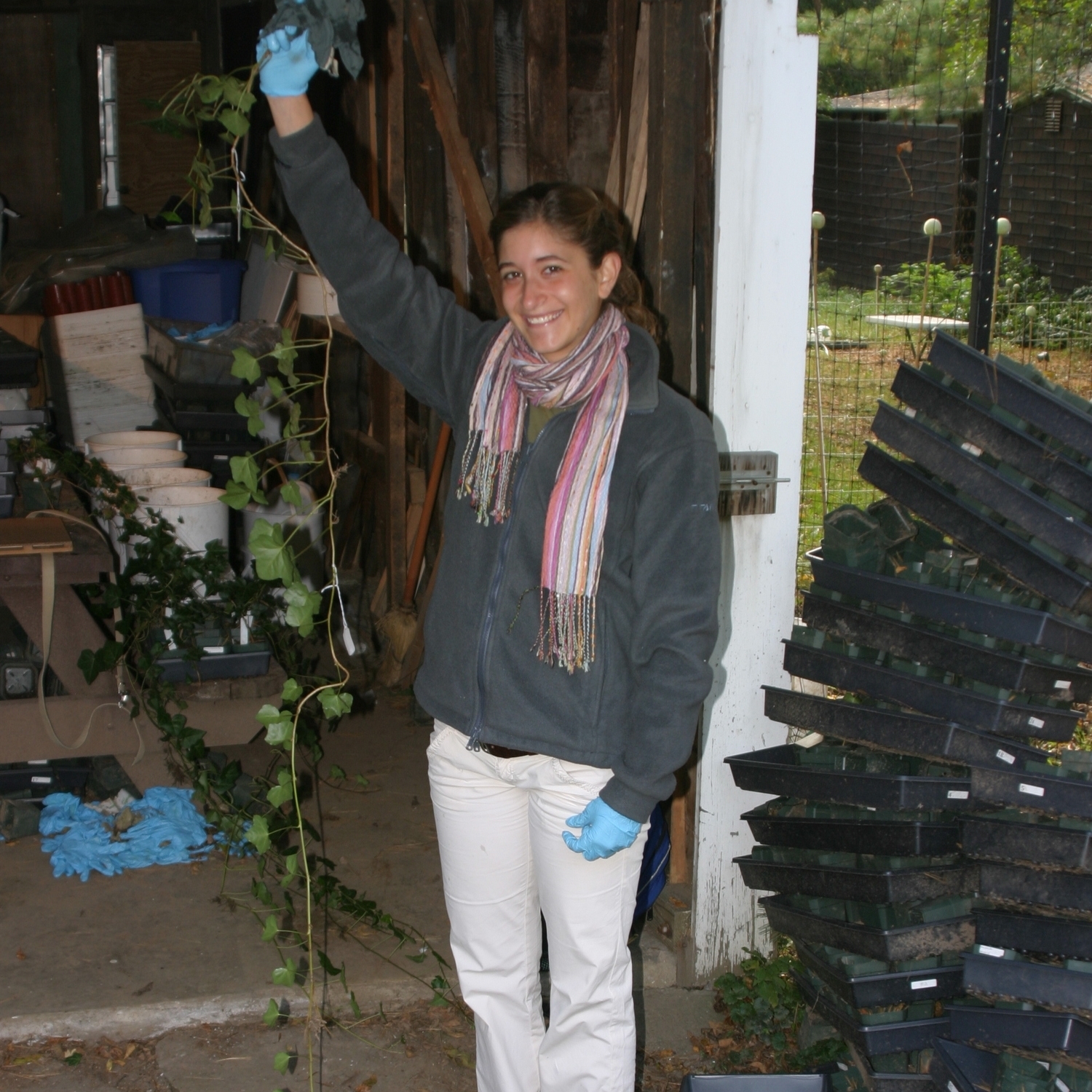Taxonomic identification of invasive species and subspecific taxa is critical for control efforts and understanding population dynamics. While morphological features may be sufficient to identify many invasive taxa, naturalized populations of plants and some other organisms may be comprised of multiple “cryptic” species. To quantify this phenomenon, I conducted a common garden experiment that tested the morphological boundaries of the ivies (Hedera spp. Araliaceae), a polyploid complex of ~15 species with a natural distribution across Europe, northern Africa and Asia.
Traditional species identification within the genus Hedera has relied on leaf morphology (shape, size), trichome structure and ploidy level, traits that may exhibit significant environmental plasticity or are impractical to evaluate in field conditions. Taxonomic identification is further confounded by horticultural uses of Hedera, which disperses ivy species far beyond their native geographic distributions. My two-year common garden experiment contained “wild-type” specimens of all commonly recognized ivy species as well as plants from naturalized populations in North America. I measured leaf size, leaf shape and architectural features of the plants in years one and two, permitting the evaluation of the effects of age on ivy characteristics.
While size-related traits were generally more heterogeneous in year two materials, shape-related traits converged to common patterns over time. Irrespective of time-of-measurement, differences in leaf dimensions, surface area and lobing permitted identification of many ivy species, especially for taxa of the Mediterranean Basin. In contrast, the diploid H. helix and tetraploid H. hibernica – sister species of northern and central Europe – were poorly distinguished within the data set. Consideration of horticultural forms and naturalized specimens of these two species further blurred their phenotypic distinction. Taken together, these data highlight the utility of morphometric analyses for identification of many ivy species but also the advantages of cpDNA sequence data and flow cytometry for identification of others.
Beyond the implications of taxonomic identification of invasive species, I am interested in the morphological impacts of polyploidy in general. That interest led me to my postdoctoral work in Brain Husband's laboratory at the University of Guelph. More information on that project can be found on the Genetic & Ecological Consequences of Polyploidy page of this site.
Below are a few pictures taken at various stages throughout this project.









